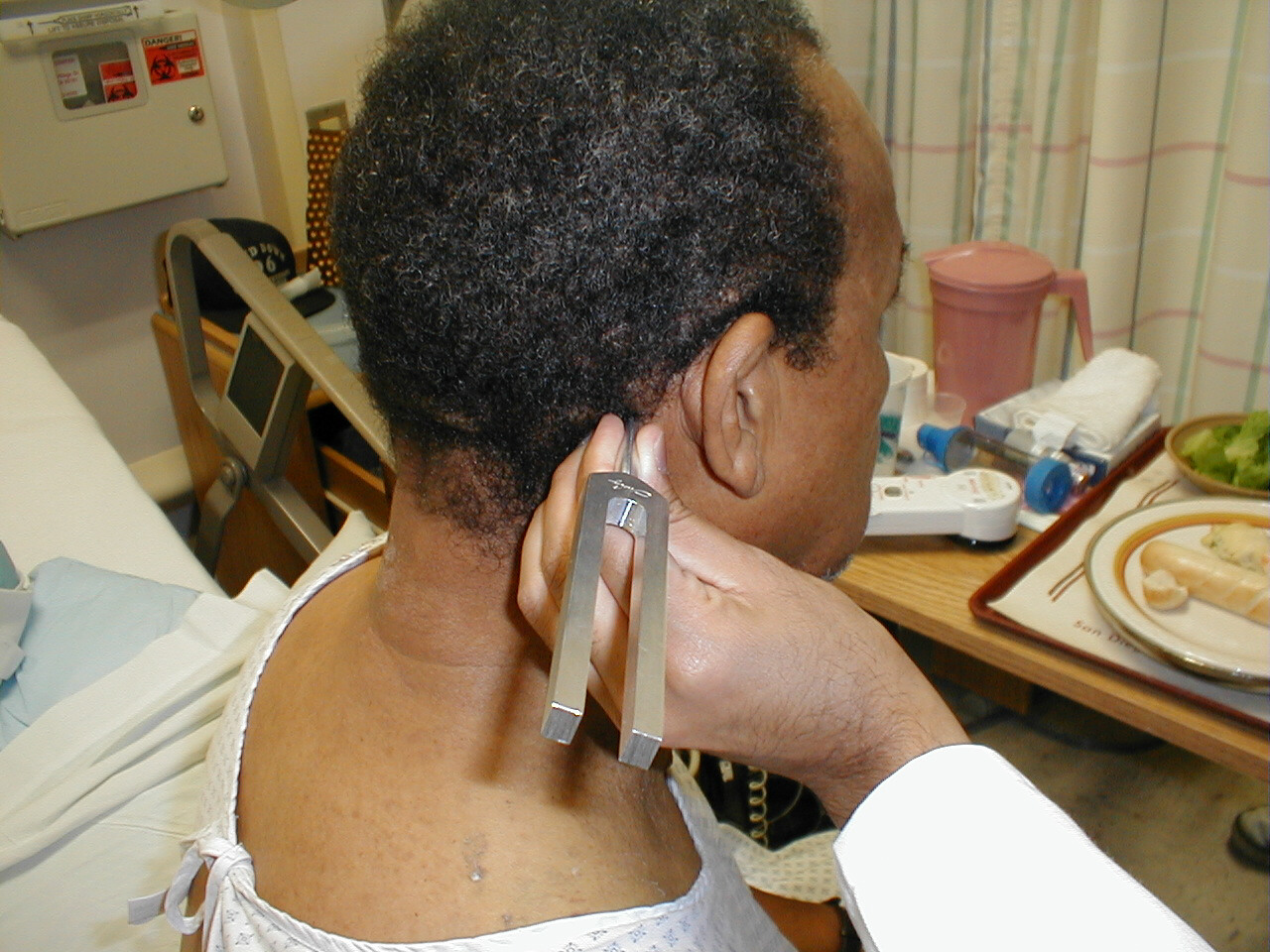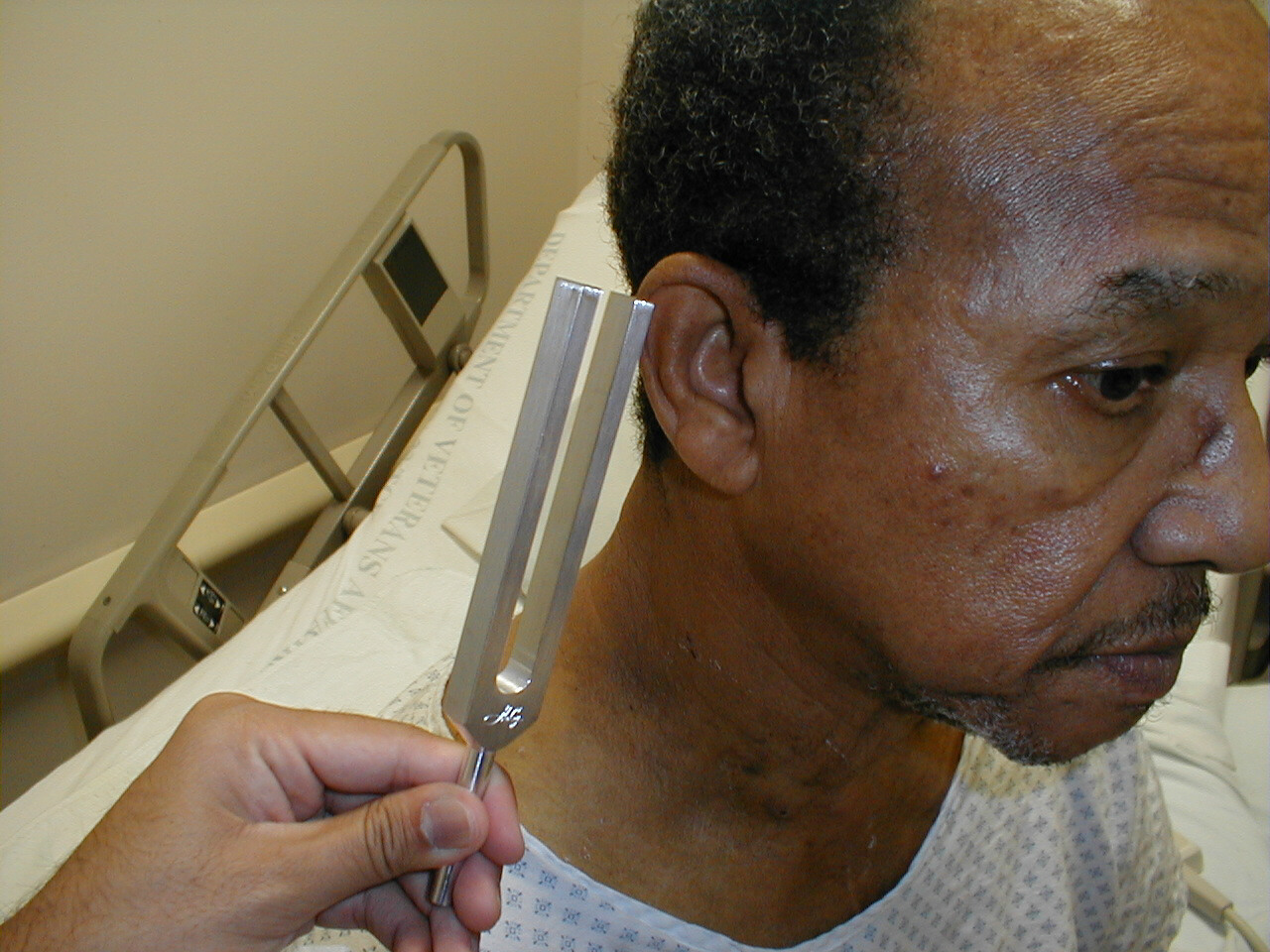Rinne test
| Rinne test | |
 | |
|---|---|
| Rinne test (Image courtesy of Charlie Goldberg, M.D., UCSD School of Medicine and VA Medical Center, San Diego, California) |
|
WikiDoc Resources for Rinne test |
|
Articles |
|---|
|
Most recent articles on Rinne test |
|
Media |
|
Evidence Based Medicine |
|
Clinical Trials |
|
Ongoing Trials on Rinne test at Clinical Trials.gov Clinical Trials on Rinne test at Google
|
|
Guidelines / Policies / Govt |
|
US National Guidelines Clearinghouse on Rinne test
|
|
Books |
|
News |
|
Commentary |
|
Definitions |
|
Patient Resources / Community |
|
Patient resources on Rinne test Discussion groups on Rinne test Patient Handouts on Rinne test Directions to Hospitals Treating Rinne test Risk calculators and risk factors for Rinne test
|
|
Healthcare Provider Resources |
|
Causes & Risk Factors for Rinne test |
|
Continuing Medical Education (CME) |
|
International |
|
|
|
Business |
|
Experimental / Informatics |
The Rinne test is a hearing test. It compares perception of sounds, as transmitted by air or by sound conduction through the mastoid. Thus, one can quickly suspect conductive hearing loss.
A Rinne test should always be accompanied by a Weber test to also detect sensorineural hearing loss and thus confirm the nature of hearing loss.
The Rinne test was named after German otologist Heinrich Adolf Rinne (1819-1868); the Weber test was named after Ernst Heinrich Weber (1795 – 1878).
Procedure
The Rinne test is performed by placing a vibrating tuning fork (512 Hz) initially on the mastoid, then next to the ear and asking which sound is loudest. Air conduction uses the apparatus of the ear (pinna, eardrum and ossicles) to amplify and direct the sound whereas bone conduction bypasses some or all of these and allows the sound to be transmitted directly to the inner ear albeit at a reduced volume, or via the bones of the skull to the opposite ear.
In a normal ear, air conduction (AC) is better than bone conduction (BC)
- AC > BC, and this is called a positive Rinne.
In conductive hearing loss, bone conduction is better than air
- BC > AC, a negative Rinne.
In sensorineural hearing loss, bone conduction and air conduction are both equally depreciated, maintaining the relative difference of
- AC > BC, a positive Rinne.
In sensorineural hearing loss patients there may be a false negative Rinne
- BC > AC, a negative Rinne.
Note that the words positive and negative are used in a somewhat confusing fashion here, other than their normal use in medical tests. Positive or negative means that a certain parameter that was evaluated was present or not. In this case, that parameter is if air conduction (AC) is better than bone conduction (BC). Thus, a "positive" result indicates the healthy state, in contrast to many other medical tests.
(Images courtesy of Charlie Goldberg, M.D., UCSD School of Medicine and VA Medical Center, San Diego, California)
-
Rinne test
-
Rinne test
Hazards
This test, and its complement the Weber test, are quick screening tests and are no replacement for formal audiometry.
Effect on opposite ear
The effect on the opposite ear, relative to the tuning fork, is reverse to the ear being tested. Here, conduction through the skull to the opposite side is more effective than conduction through room air around the head. Thus, if the normal ear is not masked, bone conduction could be reported as louder by the patient, even if both ears are normal.
References
- Tuning Fork Tests - Family Practice Notebook. Retrieved February 3, 2007.
See Also
